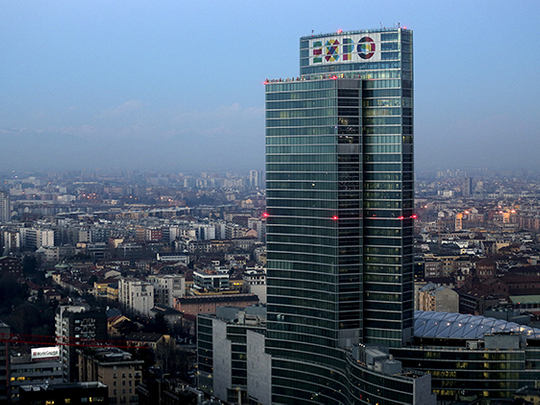
Italy’s struggling economy is slowly recovering and the outlook for 2015 and 2016 is less pessimistic after data from the Organisation for Economic Cooperation and Development (OECD) released on April 9, which is based on “indicators designed to anticipate turning points in economic activity [showed] a positive change in growth momentum”, as the organisation put it.
The good news came two days after Italian Prime Minister Matteo Renzi said that the country is about to exit its three-year recession, the longest since the end of the Second World War, by 2015, expecting GDP growth to reach 0.7 per cent, up from -0.3 per cent in 2014. The government sees further growth of 1.4 per cent in 2016 and 1.5 per cent in 2017.
“The Italian economy is better than believed a few months ago both for outside reasons and on its own merits,” Pier Carlo Padoan, Minister of Economy, said at a press conference in Rome early last month.
However, while The European Central Bank’s quantitative easing programme, low oil prices and an export-driving weak euro may have economists thinking positively about Italy’s recovery, there are also warning signs such as the heavy debt load the country still has to carry.
At the same press conference, Renzi ruled out spending cuts in 2015 and tax hikes before 2016, leaving the question open of how exactly the government would achieve the envisaged reduction of the state deficit to 2.6 per cent of GDP this year from 3 per cent in 2014, and the debt ratio of a record-high 132.5 per cent of GDP this year to 130.9 per cent in 2016. The Prime Minister said some 10 billion euros in spending cuts would start to take effect next year, and Padoan added that the government would push ahead with plans to sell state-owned enterprises in a privatisation drive, including the country’s post office operator Poste Italiane. A sales tax increase could take place between 2016 and 2018 from the current 22 per cent – and the lower rate of 10 per cent for goods including food, medicine, books, hotels, some transportation and admission to cultural and entertainment events to 13 per cent – to 25.5 per cent, among the highest in Europe.
However, analysts say the upturn remains fragile amid stubbornly high unemployment rates and weak industrial growth that are still prevalent. The country has not seen GDP growth higher than 2 per cent since the mid 1980s and its economy has always been somewhat idling in low gear over the past decades, in fact growing an average of just 1.2 per cent between 2001 and 2007, before the global financial crisis, and suffering the heftiest contraction of 5.5 per cent in 2009.
To some extent this can be attributed to political instability and lack of structural reforms, as well as the uneven division of a highly-industrialised and developed northern part -- where three-quarters of the nation’s GDP is produced -- and an agriculture-dependent southern part. And, last but not the least, two factors are chronically impeding Italy’s economic prospects: Low efficiency in public services and widespread corruption.
“Even a 1 per cent increase in the efficiency of public administration would result in an increase in per capita GDP of 0.9 per cent and growth in international investment, which would have a positive impact on employment,” says Daniele Pirola, a researcher at Fondazione Pirelli, a privately funded think tank, conference organiser and educational centre, referring to data of the General Confederation of Italian Industry (Confindustria).
Fiscal damage from corruption is estimated at 60 billion euros per year, also according to Confindustria. Italy’s Guardia di Finanza added in its 2014 report that of the 4.6 billion euros worth of public contracts checked last year, they found 1.5 billion euros in fraud and 2.6 billion euros “wasted”. Amid the scandals, Italy’s Senate on April 1 [sic!] approved an anti-corruption bill that pledges more probes and a general crackdown on corruption. The bill took two years to make and has been criticised by former anti-mafia state prosecutor Antonio Di Pietro as “not as strong as it could be but better than doing nothing”.


